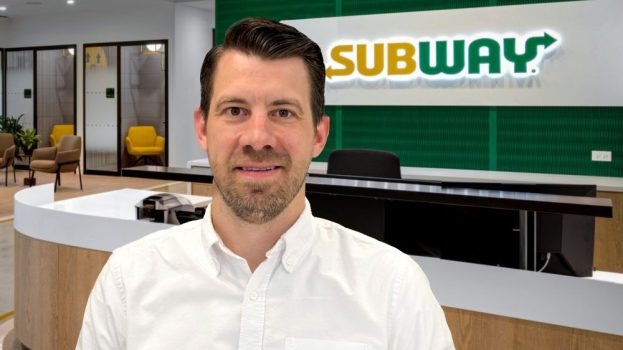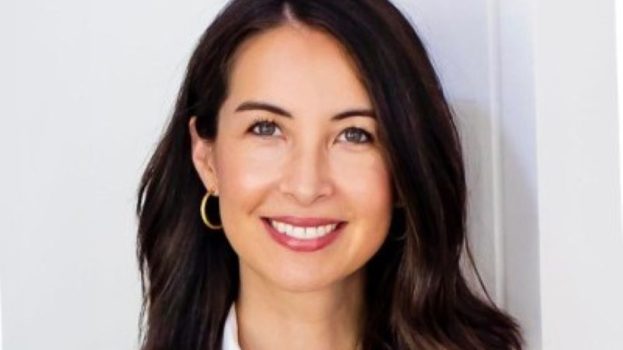This story appeared in Strategy C-Suite, a weekly email briefing on how Canada’s brand leaders are responding to market challenges and acting on new opportunities. Sign-up for the newsletter here to receive the latest stories directly to your inbox every Tuesday.
This article is part of an ongoing series on diversity and inclusion, with a particular focus on Black, Indigenous and People of Colour representation in advertising. It is based on a recent virtual roundtable with members of strategy’s CMO Council and other Canadian marketing leaders.
One of the benefits of the Black Lives Matter movement is that Black, Indigenous and People of Colour (BIPOC) are more frequently being brought into conversations. However, there’s much work to be done to ensure they’re adequately represented across all corners of the industry, not just those concerned with diversity and inclusion.
Improving outcomes for BIPOC in the ad industry demands hearing from those who have experienced its systemic racism first-hand. And that burden often falls on those who have long been outspoken advocates. However, other voices are joining the chorus calling for change – some for the first time.
When strategy invited marketing leaders who are BIPOC to join a recent CMO Council meeting to talk about diversity and inclusion, the publication was fortunate enough to have two high-profile leaders of colour agree. Their insights helped carry the D&I conversation forward in a constructive and meaningful way. But it also unveiled a less-talked-about consequence of the industry’s moment of introspection: they, too, are on a journey to better understand their own personal roles in this movement.
Neetu Godara, chief growth officer at Social Lite Vodka (pictured above, right), said she’s never publicly discussed her experiences as a leader in the context of being a woman of colour. Prior to the CMO Council meeting, she reasonably requested questions in advance, so that she could “collect [her] thoughts” on the subject. “I’ve never been a leader who has spoken about being a female leader or a person of colour,” she later said during the roundtable discussion. “I don’t know why. I guess I’m figuring that out for myself.”
It was less clear how Clinton Braganza, CMO at Scotiabank, felt about being asked to speak. (He accepted strategy‘s invitation through a spokesperson at the bank). Those feelings would become more clear, though, during the virtual meeting, where, at one point, he admitted his team would likely describe him as a “version 2.0 of Clinton that we’ve never seen.”
“I’m talking about these things very openly, whereas in the past, I didn’t have the courage, or I didn’t have the platform to talk about this,” Braganza (pictured left) said. “I felt like there would be consequences, whereas now I have in many ways found my voice.”
Recent months have been a learning experience, to say the least, but not only for the people who have benefited from a system that continues to privilege some to the detriment of others. As Braganza and Godara pointed out, the current moment has forced leaders who are BIPOC to reflect as well.
“I didn’t realize it until four months ago, when I really started to open up about what was going on in the U.S. – the way I was raised, the experiences I had to live through,” Braganza said. “I’m married to a white woman, and I’ve never had these conversations with her – ever… We can’t solve these problems by just looking at Black people or Indigenous people or People of Colour. It’s got to be all of us. Recognize that we’re all going through our own journeys.”
Rising through the ranks
Hearing exclusively from BIPOC who are leaders risks skewing reality. For every one of them with a view from the top of their industry, the numbers (or lack thereof) suggest many others eventually hit a glass ceiling. Still, Godara and Braganza’s experiences are telling.
Godara, for one, attributes part of her success to her natural extrovertedness and the encouragement of her parents. “I was raised in an environment where my parents cultivated insane amounts of confidence in me – maybe too much,” she said. “My dad was telling me to be Prime Minister since I was in Grade 2.”
 Godara began her career at Danone, then went on to spend a decade at PepsiCo. In early 2016, she left the CPG co. to co-found Social Lite Vodka alongside her business partners Dan Beach and Kevin Folk. She has come to realize her childhood expanded her view of what was possible. She was raised to be a “confident woman” and didn’t have reason to believe her voice wasn’t valued, she says. “I don’t think that’s true for everybody that comes from marginalized or disadvantaged communities.”
Godara began her career at Danone, then went on to spend a decade at PepsiCo. In early 2016, she left the CPG co. to co-found Social Lite Vodka alongside her business partners Dan Beach and Kevin Folk. She has come to realize her childhood expanded her view of what was possible. She was raised to be a “confident woman” and didn’t have reason to believe her voice wasn’t valued, she says. “I don’t think that’s true for everybody that comes from marginalized or disadvantaged communities.”
Braganza, for his part, had spent four years at Scotiabank before being named CMO in 2018. He previously spent more than a decade at Capital One, with a bit of time at Grey Advertising before that. But it was his first marketing gig at American Express, in the 1990s, that he used as an example to frame his experiences in the context of our conversation on diversity and inclusion.
Back in the day, Braganza says he was “one of one,” which he found difficult, because “you want to look around a room and you want to see people that think like you, people that look like you, people you can relate to.” Looking back on his career, he said he now realizes he “abandoned who [he] was in order to do well at work.” He has learned to embrace his identity in recent months. But, for the longest time, “I felt like I needed to be someone [else] in order to succeed.”
“It’s a self-fulfilling prophecy,” he said, adding that he’s lucky to now be leading marketing for a brand as influential as Scotiabank. “But that’s not what you want for the next generation. You don’t want them to feel like they need to fit in. You want them to feel like they belong. And then they can do well in their career. But I’ll tell you, I felt that pressure.”
During the roundtable, Antoinette Benoit, CMO at McDonald’s Canada and a member of strategy’s CMO advisory board, recalled having similar conversations with women during her time as chair of McDonald’s European Women Leadership Network, a position she held from 2008 to 2012. “The number of discussions I had with women about, ‘Can I be myself or not?'” she said, trailing off.
 “Sometimes, we don’t push when you are a representative of [the group] you want to push, because you fear you will be seen as doing it in a selfish way,” Benoit said. “When I took on this additional role of leading the Women’s Leadership Network for McDonald’s, I knew that some people would say that. And then I said, ‘I don’t care.’”
“Sometimes, we don’t push when you are a representative of [the group] you want to push, because you fear you will be seen as doing it in a selfish way,” Benoit said. “When I took on this additional role of leading the Women’s Leadership Network for McDonald’s, I knew that some people would say that. And then I said, ‘I don’t care.’”
“That’s exactly where I am today… I don’t care anymore,” Braganza responded. “In the past, it would have been, ‘Of course he’s saying that; he’s got his own agenda to promote.’ Today, I’m like, ‘It doesn’t matter.’ In many ways, I’ve stopped caring as much about myself, and I’m more concerned about others I can help. It’s as simple as that. I know it’s so easy to say. But it’s taken me almost a lifetime to figure that out.”
Helping others thrive
As the Black Lives Matter movement gained momentum, a couple of Social Lite staff called Godara to ask, “What are we going to do? Are we doing enough as a company?”
“I thought, ‘Wow, that’s kind of amazing that they felt comfortable enough to pick up the phone and challenge me and say, even though we’re small, we should be doing something and we should be part of this conversation,’” Godara said. “They were so passionate about putting plans in place, which we’re working on now.”
Since Social Lite has only 12 full-time staff – with employees working side-by-side with their leaders – Godara wondered whether they would have come forward at a large firm. She notes that fears around career advancement can sometimes prevent employees from speaking out, even at behemoths with D&I policies in place.
Braganza agreed that the dynamics are sometimes different on small teams. But, he said, whether a workplace is welcoming or not ultimately depends on the leader. In situations where the leader is not willing to listen, the backing of a large firm that might have whistleblower policies and a powerful HR department can make it easier to have your voice heard.
 “To me, it’s all about the leader in the organization and the environment they create,” he said. “I don’t think it’s a big or small thing. It’s the person who sits at the top of the pyramid.”
“To me, it’s all about the leader in the organization and the environment they create,” he said. “I don’t think it’s a big or small thing. It’s the person who sits at the top of the pyramid.”
Braganza said he was surprised to have so many people in his department come forward after Scotiabank announced it would boycott advertising on Facebook to tell him how proud they were. “But – and I have a pretty significant team – not one person called me beforehand and said, ‘This is what I think you should be doing.’ That goes exactly to the point around fear of taking a stand and suffering the consequences, because people had no idea where I stood.”
At the end of the day, Braganza added, it makes no difference if the consequences staff expect for speaking out are real or imagined. “If the outcome is silence, then it doesn’t really matter.”
Both marketers agree that it’s incumbent on leaders to create workplace environments in which employees’ voices are heard and their opinions valued. Godara says it can be as simple as taking note of who speaks and who doesn’t at boardroom meetings and making sure all employees are given the chance to shine in front of leadership.
“I’ve been part of so many HR conversations, where there’s not the same level of respect for different leadership styles – some of them being more introverted,” she said. More introverted people “have so much value to bring, such great talent and great thinking, but because their style isn’t appreciated, potentially regardless of background or gender, there’s this force against them that they ‘don’t fit.'”
For Godara, recognizing that leadership can be demonstrated in different ways could lead to more diverse talent at the top and better perspective for the organization.
“We need to cultivate confidence and cultivate environments where all people’s voices feel very valued,” she said. “That’s when you drive retention and promotion, because people feel the confidence to go for it – to ask for that promotion, to be the person presenting in front of the leadership team or whatever opportunity it may be. But are we providing that confidence and that forum to have people’s voices heard? I think that’s the starting point.”
























